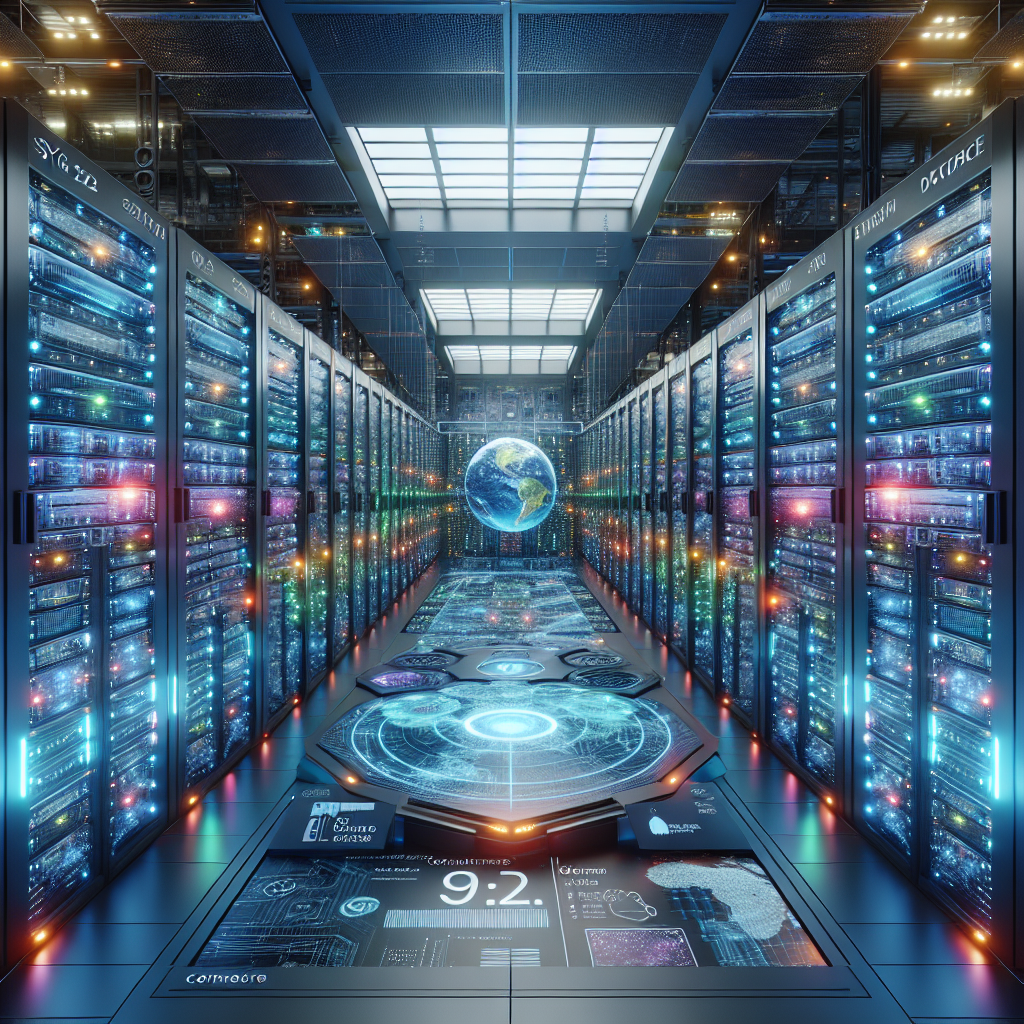AI Revolution 7. August 2025: GPT-5, Tesla FSD, and the Future of Innovation
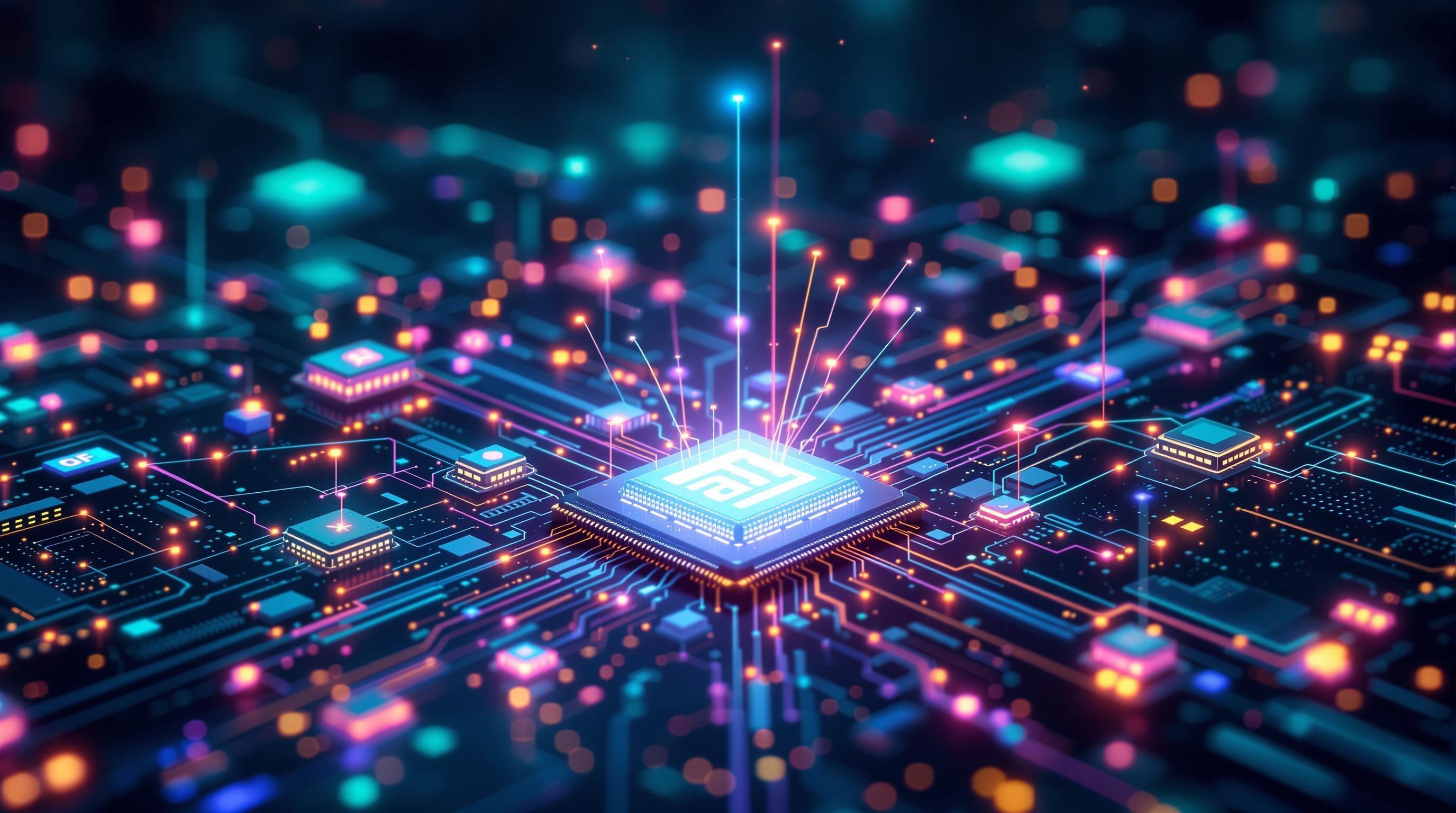
OpenAI's GPT-5 is poised to revolutionize AI with enhanced programming, scientific reasoning, and accuracy, offering developers and researchers unprecedented capabilities. Unlock the potential of this transformative AI by preparing to integrate GPT-5 into your workflows and explore its capabilities in late August 2025, and learn how to leverage its autonomous agent features to streamline tasks.
OpenAI Set to Launch GPT-5: A Leap Towards Autonomous AI?
Hold onto your hats, folks, because the AI landscape is about to shift dramatically once again with the rumored imminent release of OpenAI's GPT-5.
The Dawn of GPT-5: What We Know So Far
The buzz is palpable: OpenAI is expected to unleash GPT-5 upon the world in the coming weeks. This new iteration promises not just incremental improvements, but a genuine leap forward in AI capabilities. Whispers from within OpenAI suggest significant enhancements across a broad spectrum of tasks, especially in areas that have been challenging for previous models.
GPT-5 isn't just an upgrade; it's a transformation.

Smarter, Faster, Stronger: Key Improvements in GPT-5
So, what can we expect from GPT-5? Here's a breakdown of some of the most anticipated improvements:
Programming Prowess: Get ready for code that writes itself (almost!). GPT-5 is rumored to boast substantially improved programming capabilities, making it an invaluable asset for developers. Think fewer bugs, faster development cycles, and the ability to tackle more complex coding challenges. Imagine pairing this with tools like GitHub Copilot, an AI pair programmer, for even greater efficiency.
Scientific Reasoning: Forget rote memorization; GPT-5 is designed to reason scientifically. This means it can analyze data, formulate hypotheses, and draw conclusions with a level of sophistication previously unseen in AI models.
Math Mastery: Numbers, equations, and complex calculations? No problem! GPT-5 is expected to demonstrate a significant leap in mathematical proficiency, potentially opening doors to new applications in fields like finance, engineering, and scientific research. You can even compare it's math skills to WolframAlpha, a computational knowledge engine that excels in providing expert-level answers using AI.
Accuracy and Reasoning: The Hallucination Hurdle
One of the biggest challenges facing current large language models (LLMs) is the issue of "hallucinations," where the AI confidently presents false or misleading information as fact. GPT-5 aims to tackle this head-on with enhanced accuracy and reasoning abilities. While no AI is perfect, a significant reduction in hallucinations would be a game-changer, making GPT-5 a more reliable and trustworthy tool.
The Autonomous AI Agent: ChatGPT's Evolution
Perhaps the most intriguing aspect of the GPT-5 release is the potential transition of ChatGPT into a fully autonomous AI agent. Imagine an AI that can not only understand your requests but also proactively take steps to fulfill them, without constant human intervention. This could revolutionize everything from customer service to personal assistance.
The move to an autonomous AI agent is a huge leap towards AGI (artificial general intelligence).
GPT-5 vs. GPT-4: A Generational Leap
How will GPT-5 stack up against its predecessor, GPT-4? While official benchmarks are yet to be released, the expectation is that GPT-5 will surpass GPT-4 in virtually every key performance indicator. We're talking about:
Improved Context Understanding: GPT-5 is expected to have a significantly larger context window, allowing it to process and retain more information, leading to more coherent and relevant responses.
Enhanced Creativity: From writing compelling marketing copy to composing original music, GPT-5 is anticipated to exhibit a higher degree of creativity and originality. Tools like Copy.ai, an AI-powered copywriting tool, may also see increased performance by utilizing GPT-5.
Greater Efficiency: Despite its increased capabilities, GPT-5 may also be more energy-efficient and cost-effective to run, making it a more sustainable solution for businesses and individual users.
What About the Release Date?
The million-dollar question! While OpenAI remains tight-lipped about the exact release date, industry insiders suggest that GPT-5 could be launched as early as late August 2025. Keep your eyes peeled for official announcements from OpenAI in the coming weeks.
The arrival of GPT-5 promises to be a pivotal moment in the AI revolution, with the potential to reshape industries, transform workflows, and unlock new possibilities. As we eagerly await its arrival, the implications and potential applications of this powerful new AI model are truly staggering. But it's not just OpenAI making waves; Tesla's Full Self-Driving (FSD) technology is also poised for a major leap forward. Let's delve into that next.
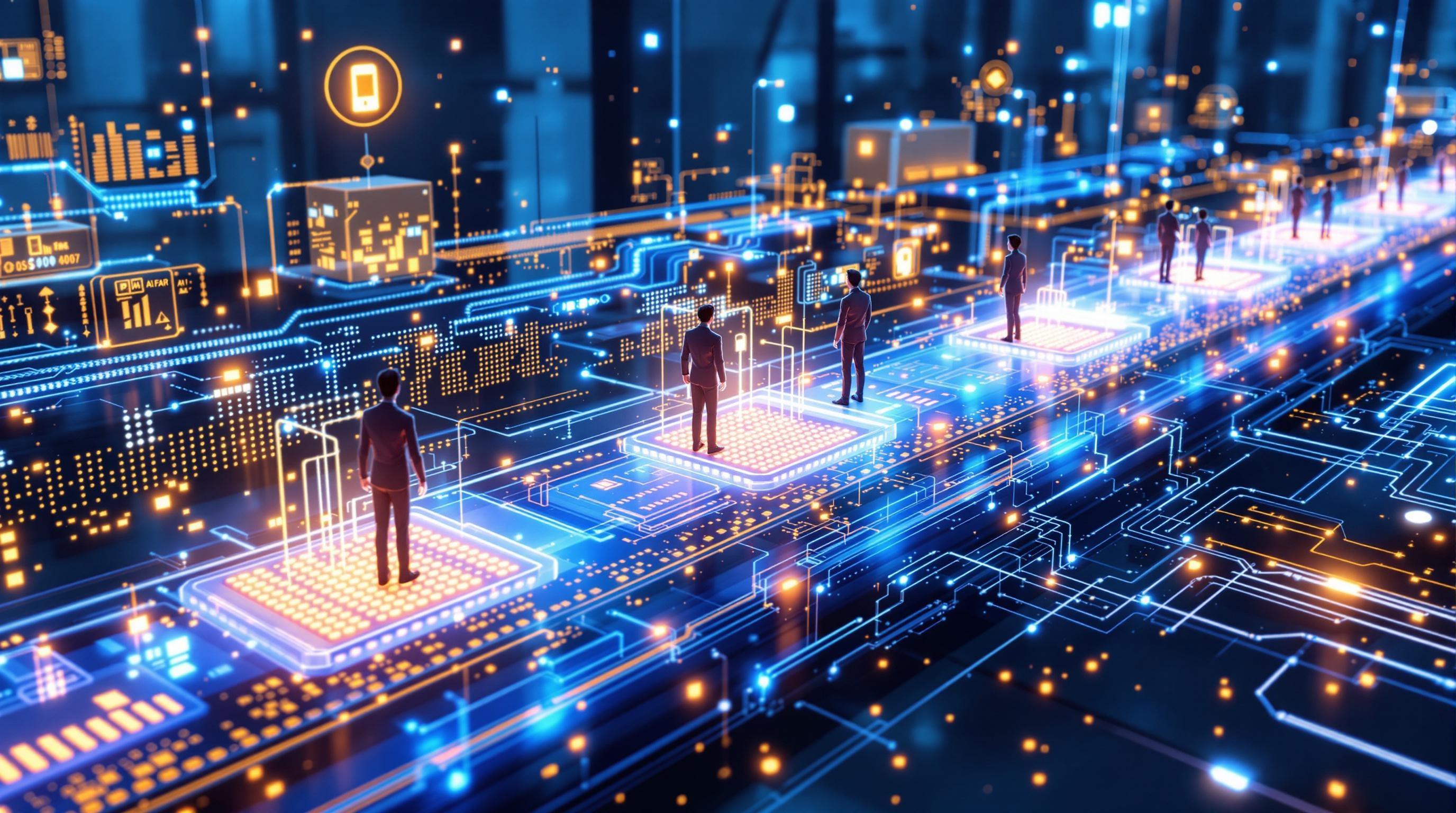
Tesla's Massive FSD Model: 10x Parameter Boost Promises Autonomous Driving Breakthrough
Get ready to witness a quantum leap in autonomous driving, because Tesla's about to crank up the dial to eleven (or, more accurately, ten times its current capacity!).
10x Parameter Boost: A Game Changer for Tesla FSD
Imagine trying to understand the world with a brain that's suddenly ten times more powerful. That's essentially what Tesla is doing with its next generation Full Self-Driving (FSD) model. By increasing the number of parameters tenfold, Tesla is giving its AI a vastly greater capacity to process information, recognize patterns, and make nuanced decisions. This isn't just a minor tweak; it's a fundamental upgrade that could unlock entirely new levels of autonomous capability.
More parameters mean a more complex and capable model, better able to handle the infinite variability of real-world driving scenarios.
Think of it like this: a child might struggle to differentiate between a dog and a wolf, but an adult with more experience and knowledge (parameters) can easily tell them apart. Similarly, a larger AI model can better distinguish between a pedestrian, a cyclist, and a stationary object, leading to safer and more reliable self-driving.
Enhanced Situational Awareness Through Improved Video Compression
But it's not just about raw processing power. Tesla is also focusing on improving how its AI 'sees' the world. This involves advancements in video compression techniques, allowing the system to process more visual information with greater efficiency. This is crucial for:
Real-time responsiveness: Quicker processing of visual data allows the car to react faster to changing conditions.
Enhanced detail recognition: Improved compression preserves crucial details in the video feed, enabling the AI to identify smaller objects and subtle movements.
Robustness in adverse conditions: Better video processing ensures reliable performance even in challenging weather or lighting conditions.
This improved video compression directly feeds into a more comprehensive situational awareness. The car can not only 'see' more, but it can also 'understand' the context of what it's seeing, leading to more informed and safer driving decisions. If you are interested in how AI views images, consider exploring AI image generation.
Public Beta and the Road to Full Autonomy
Here's the exciting part: Tesla plans to roll out public beta testing of this upgraded FSD system in late September. This means that ordinary drivers will soon have the opportunity to experience the next evolution of Tesla's self-driving capabilities firsthand. This real-world testing is invaluable for:
Identifying edge cases: Public beta testers will encounter a wide range of driving scenarios that are difficult to simulate in a lab.
Refining the AI model: Data collected from beta testers will be used to further train and refine the FSD model, improving its accuracy and reliability.
Building public confidence: A successful beta program can help build trust in autonomous vehicle technology and pave the way for wider adoption.
The upcoming public beta isn't just a test run; it's a crucial step towards realizing the promise of truly autonomous vehicles.
The Future is Autonomous: A World Transformed
The implications of this technological leap are profound. As Tesla continues to refine and expand its self-driving capabilities, we can expect to see:
Safer roads: Autonomous vehicles have the potential to significantly reduce accidents caused by human error.
Increased mobility: Self-driving cars can provide transportation to people who are unable to drive themselves, such as the elderly or disabled.
Reduced congestion: Autonomous vehicles can optimize traffic flow, leading to less congestion and shorter commutes.
New business models: The rise of autonomous vehicles will create new opportunities in areas such as ride-sharing, delivery services, and logistics.
Tesla's relentless pursuit of autonomous driving is pushing the boundaries of what's possible. With its next-generation FSD model, the company is poised to accelerate the arrival of a future where cars drive themselves, freeing up our time and making our roads safer for everyone. If you're keen to stay abreast of such developments, regularly checking AI News is a must.

NVIDIA Powers OpenAI Inference with New GB200 Chip: A Hardware Revolution
The AI revolution isn't just about algorithms; it's fueled by raw processing power, and NVIDIA is delivering a game-changer. NVIDIA's new GB200 NVL72 hardware is set to redefine the landscape of AI inference, especially for models like OpenAI's gpt-oss. This isn't just an incremental upgrade; it's a leap forward that promises to reshape how AI is deployed from the cloud to the edge.
Unprecedented Inference Speed: 1.5 Million Tokens Per Second
At the heart of this revolution lies the sheer speed of the NVIDIA GB200 NVL72. Imagine sifting through a massive library of information at lightning speed. This hardware is engineered to deliver an astounding 1.5 million tokens per second. To put this in perspective, that's like reading the entire "Harry Potter" series in under a minute. This blistering speed means AI models can respond to queries, generate content, and make decisions in near real-time.
The implications are enormous, from enhancing user experiences with instant responses to enabling real-time analysis of massive datasets.
Faster Response Times: Users will experience virtually no lag when interacting with AI applications.
Higher Throughput: Systems can handle a significantly greater volume of requests concurrently.
Real-Time Analytics: Businesses can gain immediate insights from streaming data, enabling quicker, more informed decisions.
The Advantage for OpenAI's gpt-oss Models
One of the most exciting aspects of the GB200 NVL72 is its impact on OpenAI's gpt-oss models. This hardware is designed to provide faster and more cost-effective inference. This means that running these powerful models becomes significantly more accessible and efficient. This is like getting a super-efficient engine for your AI car, allowing you to go farther on less fuel.
Consider the implications for developers and businesses:
Reduced Costs: Lower operational expenses for running AI models at scale.
Increased Accessibility: Makes advanced AI capabilities available to a wider range of users and organizations.
Faster Development Cycles: Allows developers to iterate and deploy AI solutions more quickly.
Industry-Leading Chip Performance
NVIDIA has consistently pushed the boundaries of what's possible in chip design, and the GB200 NVL72 is no exception. It's not just about speed; it's about efficiency, scalability, and reliability. It showcases industry-leading chip performance. This is the equivalent of having the fastest, most reliable sports car on the market.
Key performance attributes include:
Optimized Architecture: Purpose-built for AI inference workloads.
High Bandwidth Memory: Enables rapid data access and processing.
Advanced Interconnects: Facilitates seamless communication between multiple GPUs.
Driving AI Innovation Through Specialized Hardware
The rise of AI isn't just a software story. Specialized hardware is playing a pivotal role in accelerating AI innovation. The GB200 NVL72 exemplifies this trend, demonstrating how tailored hardware solutions can unlock new levels of performance and efficiency. This is like having a custom-built race car designed specifically for one track.
We're moving beyond general-purpose computing towards a future where hardware is optimized for specific AI tasks, leading to breakthroughs in various fields.
From Cloud to Edge: AI Inference Everywhere
One of the most compelling aspects of the GB200 NVL72 is its versatility. It can be deployed in the cloud, powering large-scale AI services, and at the edge, enabling real-time AI processing on devices and in remote locations. Edge computing processes data closer to where it is created. This is like having the ability to run advanced AI not only in data centers but also on smartphones, autonomous vehicles, and industrial robots. Speaking of autonomous vehicles, Tesla's advancements in Full Self-Driving (FSD) may be accelerated due to this. Stay tuned to AI News to remain up-to-date on this trending topic.
Here's how the GB200 NVL72 facilitates AI inference from cloud to edge:
Scalable Architecture: Easily adapts to different deployment scenarios.
Energy Efficiency: Minimizes power consumption, making it suitable for edge devices.
Robust Security Features: Protects sensitive data at the edge.
The NVIDIA GB200 NVL72 is poised to revolutionize AI inference. Its unmatched speed, cost-effectiveness, and versatility make it a critical enabler for the next wave of AI applications. As AI continues to permeate every facet of our lives, specialized hardware like this will be essential for realizing its full potential. The impact on models like ChatGPT, for example, could be substantial, offering users even faster and more seamless interactions. Next, we'll examine the groundbreaking advancements in Tesla's Full Self-Driving (FSD) technology and explore how AI is transforming the automotive industry.
$6 Billion AI Drug Discovery Partnership: Revolutionizing Pharmaceutical R&D
The pharmaceutical industry is on the cusp of a seismic shift, and a recent $6 billion partnership is proof that AI is no longer a futuristic fantasy but a present-day reality.
A Colossal Collaboration: XtalPi and DoveTree
Imagine two titans joining forces to conquer a seemingly insurmountable challenge. That's precisely what's happening with the groundbreaking collaboration between XtalPi and DoveTree. This isn't just another partnership; it's a $6 billion commitment to revolutionizing pharmaceutical R&D through the power of artificial intelligence. XtalPi, known for its innovative AI-driven drug discovery platform, is teaming up with DoveTree, a major player in pharmaceutical research. The sheer scale of this alliance underscores the immense potential and growing confidence in AI's ability to transform how we discover and develop life-saving medications.
Shortening Timelines with AI Algorithms
Drug development is notoriously slow, often taking a decade or more to bring a new treatment from the lab to patients. This lengthy process is fraught with challenges, from identifying promising drug candidates to navigating complex clinical trials. However, AI algorithms are poised to drastically shorten these timelines. By analyzing vast datasets, AI can predict the efficacy and safety of potential drugs with greater accuracy, allowing researchers to focus on the most promising leads. This targeted approach can significantly accelerate the drug discovery process, bringing new treatments to market faster than ever before.
AI's ability to analyze complex biological data is like having a super-powered microscope, revealing insights that would otherwise remain hidden.
Cutting Costs with Intelligent Automation
The cost of developing a new drug can easily exceed $2 billion, a staggering figure that contributes to high drug prices and limited access to essential medications. AI offers a pathway to dramatically reduce these costs by automating many of the time-consuming and resource-intensive tasks involved in drug development. From virtual screening of drug candidates to optimizing clinical trial designs, AI can streamline operations and minimize the risk of costly failures. By reducing the financial burden of drug development, AI has the potential to make medications more affordable and accessible to patients worldwide.
The AI Revolution in Pharmaceutical R&D
This partnership is a prime example of how AI is revolutionizing pharmaceutical R&D. AI isn't just a tool; it's a paradigm shift that's transforming every stage of the drug development lifecycle. From target identification and drug design to preclinical testing and clinical trials, AI is enabling researchers to make more informed decisions, accelerate discovery, and improve the efficiency of their work. We are seeing AI applied to optimize the n8n process, which helps with workflow automation.
Accelerating the Delivery of New Treatments
Ultimately, the goal of this AI-driven revolution is to accelerate the delivery of new treatments to patients in need. By shortening timelines, reducing costs, and improving the efficiency of drug development, AI has the potential to bring life-saving medications to market faster than ever before. This is particularly crucial for diseases with limited treatment options or urgent unmet needs. The XtalPi and DoveTree partnership represents a significant step towards a future where AI is a driving force in delivering innovative and effective treatments to patients around the world.
This collaboration highlights the significant potential of AI in pharmaceutical research, setting a new precedent for how technology can accelerate innovation and improve healthcare outcomes. Keep up with the latest developments in this rapidly evolving field by visiting our AI News section for daily updates.
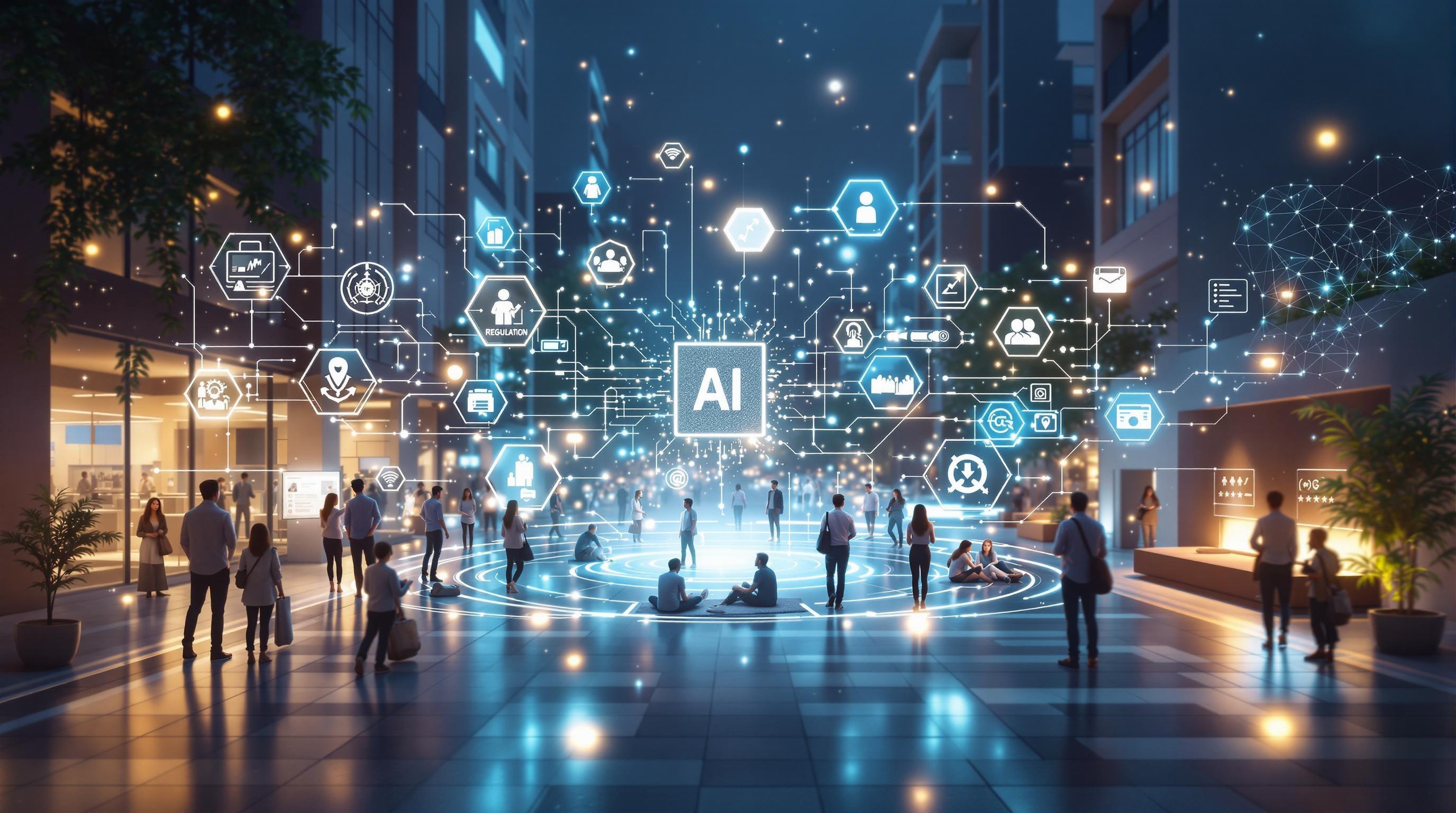
Microsoft AI Outperforms Doctors in Diagnostics: The Future of Medical Decision-Making
Imagine a world where getting an accurate diagnosis is faster, cheaper, and more reliable, no matter where you live. That future is rapidly approaching, thanks to groundbreaking advancements in AI.
Microsoft's MAI-DxO: A Diagnostic Game Changer
Microsoft has developed a cutting-edge AI platform called MAI-DxO that's making waves in the medical community. The platform leverages the power of multiple AI agents working in concert to achieve diagnostic accuracy that surpasses human doctors in certain contexts. How does it work? MAI-DxO brings together a diverse set of AI models, each with its own strengths and specializations. These models then engage in a simulated "debate," challenging each other's findings and converging on a consensus diagnosis. This approach leverages the collective intelligence of multiple AI systems, mitigating individual biases and blind spots.
Think of it like assembling a team of the world’s top medical specialists, each bringing their unique expertise to the table to solve a complex case. Except, instead of human doctors, you have AI agents analyzing data at lightning speed. For example, you could use a tool like DeepMind AlphaFold, that can predict protein structures from their amino acid sequence, enhancing drug discovery and disease understanding.
Achieving Unprecedented Accuracy
The results are truly remarkable. MAI-DxO has achieved a diagnostic accuracy of 85% in trials, exceeding the average accuracy of human doctors in the same scenarios.
This level of precision could dramatically reduce the number of misdiagnoses, leading to better patient outcomes and lower healthcare costs. To put this in perspective, consider the implications for conditions that are notoriously difficult to diagnose, such as rare diseases or early-stage cancers. Early and accurate diagnosis is paramount for effective treatment.
Transforming Medical Decision-Making
The implications of such a platform extend far beyond simply improving diagnostic accuracy. Microsoft AI diagnostics have the potential to transform medical decision-making at every level, empowering doctors with new insights and tools to provide personalized care. Imagine a future where AI-powered diagnostic tools are seamlessly integrated into electronic health records, providing real-time decision support to clinicians at the point of care. With a tool like Consensus, an AI-powered search engine that extracts and distills findings directly from scientific research, doctors can improve and speed up their research process.
This could lead to more informed treatment decisions, reduced medical errors, and improved patient satisfaction.
Furthermore, the data generated by AI diagnostic tools could be used to identify trends and patterns in disease prevalence, enabling public health officials to develop targeted interventions and prevent outbreaks. Check out AI News for more on how AI is being used in the medical field.
Bridging the Healthcare Gap in Resource-Limited Regions
One of the most exciting aspects of AI in resource-limited regions is its potential to democratize access to quality healthcare. In many parts of the world, access to medical specialists is limited, and diagnostic equipment is scarce. AI-powered diagnostic tools can bridge this gap, bringing expert-level diagnostic capabilities to remote and underserved communities.
Imagine a rural clinic equipped with a simple AI-powered diagnostic device that can accurately diagnose a range of common conditions, from malaria to pneumonia. This could save lives and improve the health and well-being of millions of people who currently lack access to basic healthcare services.
The Road Ahead for AI Diagnostic Tools
While the progress in AI medical accuracy is impressive, it's important to acknowledge that AI is not a replacement for human doctors. Instead, it's a powerful tool that can augment and enhance their capabilities. The future of medicine will likely involve a collaborative partnership between humans and AI, where AI handles the routine tasks and provides decision support, while doctors focus on the more complex and nuanced aspects of patient care.
The development and deployment of AI diagnostic tools raise important ethical considerations, such as data privacy, algorithmic bias, and the potential for job displacement. It's essential that these issues are addressed proactively to ensure that AI is used in a responsible and equitable manner. As AI continues to evolve, we can expect even more groundbreaking advancements in medical decision-making. From personalized treatment plans to predictive analytics, AI has the potential to revolutionize healthcare and improve the lives of people around the world. And to stay on top of these advancements, you can always check our AI News section.
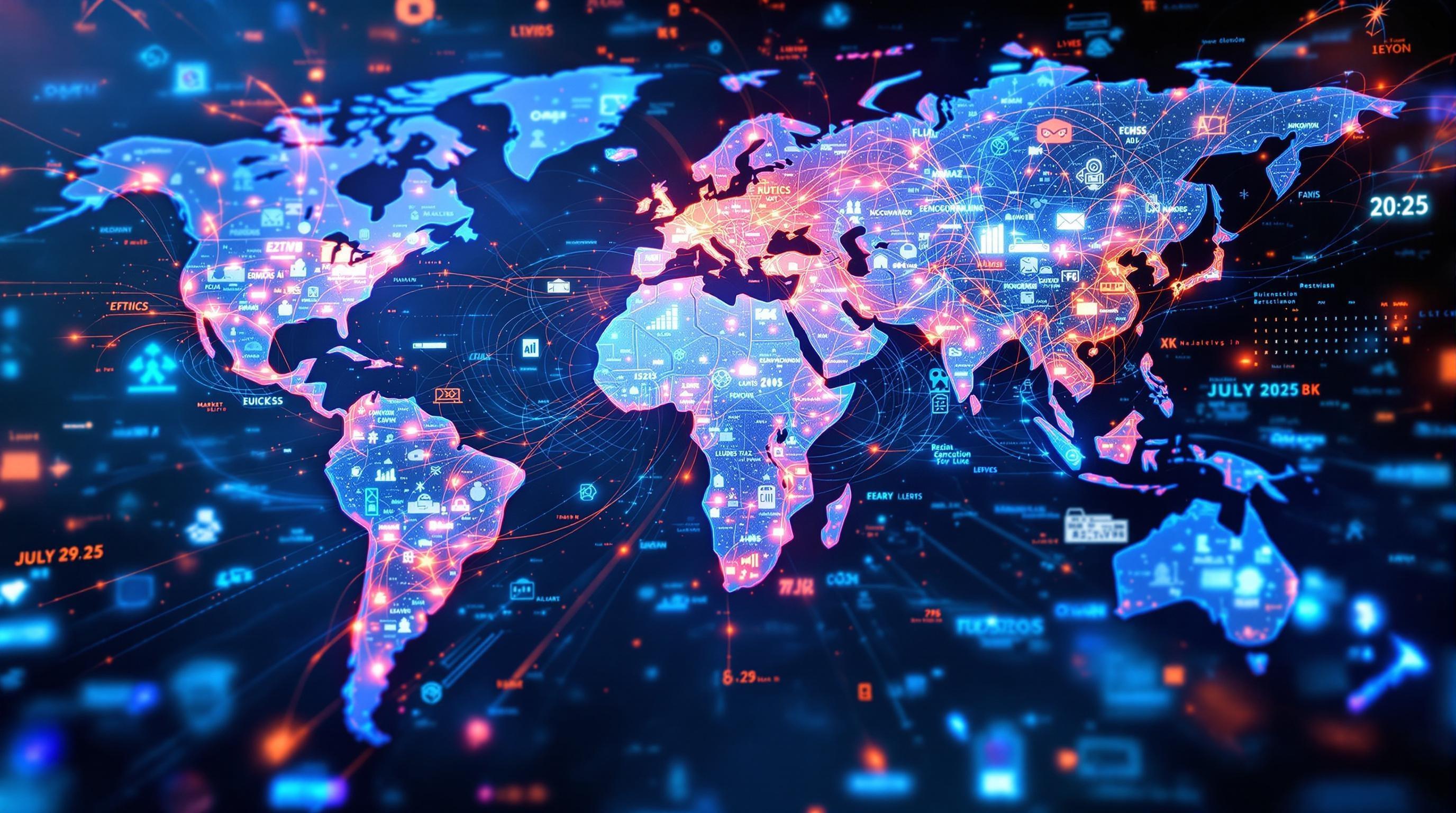
AI Democratizes Financial Advice: Personalized Strategies for Everyone
Imagine a world where expert financial advice isn't just for the wealthy, but accessible to everyone, regardless of their income or background. This is the promise of AI in 2025, and it's rapidly becoming a reality. Let's dive into how AI is democratizing financial advice and opening up new possibilities for financial well-being.
Generative AI: Your Personal Financial Planner
Generative AI is revolutionizing how we approach financial planning. Instead of generic advice, AI algorithms can analyze your unique financial situation, goals, and risk tolerance to create a personalized plan. Think of it as having a financial advisor in your pocket, available 24/7. Tools like ChatGPT, which is known for its conversational AI capabilities, can be used to simulate financial scenarios and answer your questions in plain language, making complex topics easier to understand.
Generative AI is creating a future where financial literacy and personalized strategies are available to all, not just a select few.
Guarding Your Assets: AI for Fraud Detection and Risk Management
AI's capabilities extend beyond just planning; it's also a powerful tool for protecting your finances. AI algorithms can analyze vast amounts of data to detect fraudulent transactions, identify potential risks, and alert you to suspicious activity. This level of vigilance is far beyond what any human could achieve, providing an extra layer of security for your hard-earned money. These systems are constantly learning and adapting to new threats, ensuring that your financial assets are as safe as possible.
Tailored Financial Strategies for Every Income Level
One of the most exciting aspects of AI-driven financial advice is its ability to cater to individuals at all income levels. Whether you're just starting out or have a sizable portfolio, AI can provide tailored strategies that fit your specific needs. For example:
For those with limited income: AI can help create a budget, identify areas where you can save money, and develop a plan to pay off debt. It can even suggest investment options with minimal risk.
For mid-income earners: AI can assist with retirement planning, college savings, and investment diversification. It can also help you optimize your tax strategy.
For high-income individuals: AI can provide sophisticated investment advice, estate planning strategies, and tax optimization techniques. It can also help you manage complex financial assets.
The Rise of AI-Powered Advisory Services
We're seeing a surge in AI-powered advisory services that are disrupting the traditional financial planning industry. These services use AI algorithms to provide investment advice, manage portfolios, and offer personalized financial guidance at a fraction of the cost of traditional advisors. Tools like Salesforce Platform can be used to personalize and scale these advisory services, making them accessible to a wider audience. This means more people can access high-quality financial advice without breaking the bank.
Extending Financial Guidance to Millions
The ultimate goal of AI in finance is to extend financial guidance to millions of people who have been underserved by traditional financial institutions. By automating many of the tasks that human advisors perform, AI can significantly reduce the cost of providing financial advice, making it affordable for everyone. As AI technology continues to evolve, we can expect to see even more innovative solutions that further democratize financial advice and empower individuals to take control of their financial futures.
AI News constantly highlights these advancements, showcasing how AI in financial planning is no longer a futuristic concept but a present-day reality. The integration of generative AI finance is streamlining processes, enhancing security, and paving the way for a more equitable financial landscape where AI financial advisors are democratizing access to personalized strategies for all.
The democratization of financial advice through AI represents a monumental shift, promising a future where sound financial planning is no longer a luxury but a fundamental right, accessible to all, regardless of their socioeconomic status. This evolution will undoubtedly reshape the financial landscape, empowering individuals to make informed decisions and secure their financial well-being with the assistance of readily available AI tools.
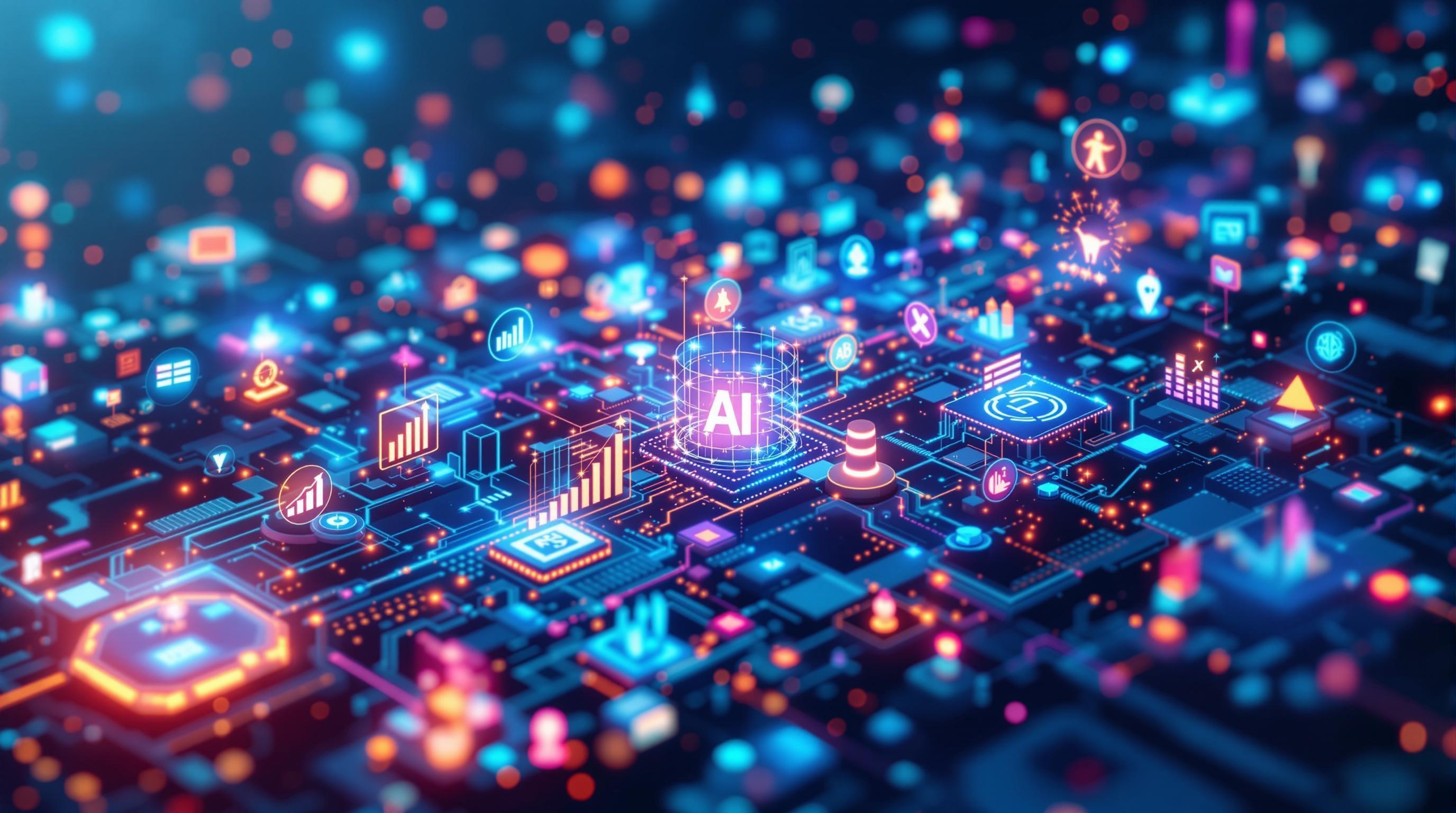
Anthropic's Claude Opus 4.1: Surpassing Human Hackers and Redefining AI Security
The AI landscape is constantly evolving, and Anthropic's latest offering is making waves. Let's delve into how Claude Opus 4.1 is not just raising the bar but redefining it, especially in AI security.
Anthropic's Claude Opus 4.1: A New Era of AI
Anthropic has officially launched Claude Opus 4.1, marking a significant leap in AI capabilities. This new model isn't just an incremental upgrade; it's a complete overhaul designed to tackle more complex tasks with greater efficiency and precision. Imagine a tool that not only understands intricate instructions but also executes them flawlessly, bridging the gap between human intent and AI action. With Claude setting a new standard, it's safe to say that the competition is about to get a lot fiercer.
Enhanced Agentic Task Execution and Real-World Programming
One of the most impressive aspects of Claude Opus 4.1 is its enhanced ability to handle agentic task execution. This means it can autonomously manage and complete tasks with minimal human intervention. Furthermore, it shows proficiency in real-world programming, and excels in logical reasoning, surpassing many existing AI models. This positions it as a versatile tool for a wide array of applications, from software development to complex data analysis.
Outperforming Human Hackers: A Game Changer in AI Security
Perhaps the most groundbreaking achievement of Claude Opus 4.1 is its ability to outperform human hackers in certain cybersecurity challenges. This isn't just a theoretical claim; it's based on rigorous testing and real-world simulations. Think of it as having an AI security expert that never sleeps, constantly monitoring and defending against potential threats. This capability has profound implications for the future of AI cybersecurity, where AI can proactively defend against increasingly sophisticated cyberattacks.
Claude: A Formidable Alternative
In a market often dominated by a few key players, Claude emerges as a formidable alternative to other large language models. Its unique architecture and training methodologies give it distinct advantages, particularly in areas like safety and reliability. It's like having a Swiss Army knife of AI tools, ready to tackle diverse tasks with exceptional proficiency.
Claude Opus 4.1 Capabilities:
Advanced Reasoning: Excels at complex problem-solving and decision-making.
Real-World Programming: Capable of writing and debugging code with minimal human assistance.
Enhanced Security: Demonstrates superior performance in identifying and mitigating cybersecurity threats.
Autonomous Task Execution: Manages and completes tasks independently, freeing up human resources.
Anthropic Claude AI: The Power Behind the Innovation
At the heart of Claude Opus 4.1 lies Anthropic's cutting-edge AI technology. Anthropic is committed to developing AI systems that are not only powerful but also safe and beneficial to society. Their focus on ethical AI development sets them apart, ensuring that their models are aligned with human values and societal norms.
"Anthropic's commitment to safety and ethical AI development is a key differentiator in the rapidly evolving AI landscape."
AI Cybersecurity Challenges
While Claude Opus 4.1 represents a significant advancement in AI security, it also highlights the ongoing challenges in this field. As AI becomes more powerful, so too do the potential threats it can be used to create. Staying ahead requires continuous innovation and a proactive approach to identifying and mitigating risks.
Claude Opus 4.1 is not just a new AI model; it's a glimpse into the future of AI, where machines can augment human capabilities in profound ways. From outperforming human hackers to redefining AI security, Claude Opus 4.1 is setting a new standard for what's possible.
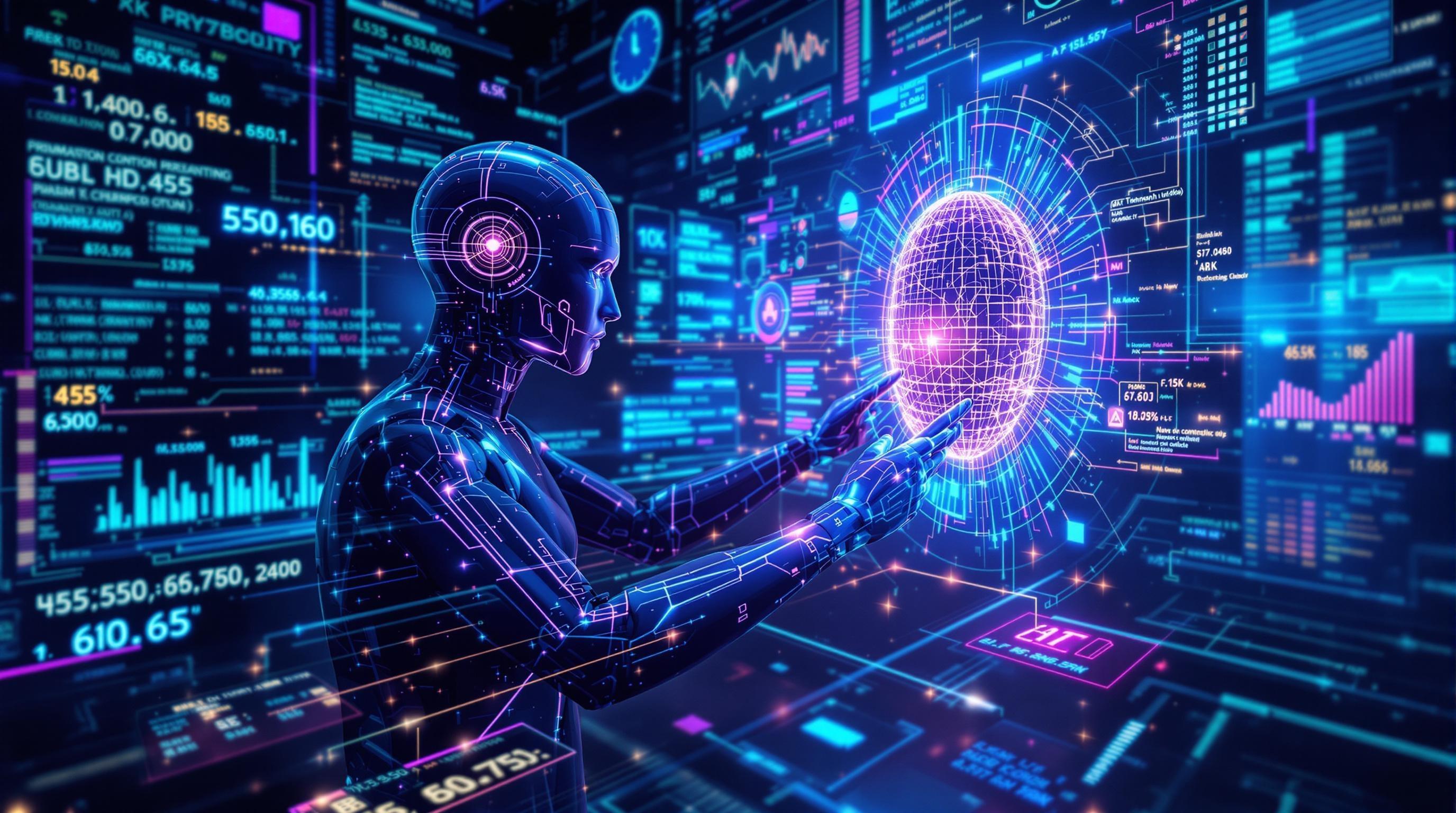
Meta Expands Llama 4 Ecosystem: Democratizing AI Innovation with Open Source
The AI landscape is constantly evolving, and Meta is making significant strides with its open-source initiatives. Let's delve into how Meta is expanding its Llama ecosystem and democratizing AI innovation.
Introducing Scout and Maverick: Llama 4's Powerful Extensions
Meta isn't just sitting still; they're actively expanding the capabilities of their Meta Llama 4 model. Building upon the foundation of Llama, Meta has introduced two new extensions: Scout and Maverick. Scout is designed for enhanced search and information retrieval, acting like a super-powered research assistant. Maverick, on the other hand, focuses on creative content generation, enabling users to produce diverse and engaging material. These extensions significantly broaden Llama's applicability, making it a more versatile tool for developers and researchers alike.
Native Multimodal Capabilities and Extended Context Windows
One of the most exciting advancements is the integration of native multimodal capabilities into the Llama architecture. This means that Llama can now process and understand information from various sources, including text, images, and audio. This opens up a world of possibilities, from creating AI-powered image recognition systems to developing interactive voice assistants. Furthermore, Meta has extended the context windows of Llama, allowing it to process longer and more complex sequences of information. This is crucial for tasks that require a deeper understanding of context, such as summarizing lengthy documents or engaging in more nuanced conversations.
The expansion of context windows represents a significant step towards more human-like AI interactions, as it allows the model to maintain coherence and relevance over extended periods.
The Behemoth Cometh: Surpassing GPT-4o in STEM
Looking ahead, Meta is developing an even more powerful model, currently code-named "Behemoth." This upcoming model is expected to surpass even GPT-4o in STEM-related tasks. This means Behemoth will excel in areas like mathematics, science, and engineering, making it an invaluable tool for researchers and professionals in these fields. The potential applications are vast, ranging from accelerating scientific discovery to optimizing complex engineering designs.
Democratizing AI: Meta's Open-Source Strategy
Meta's commitment to open source is a game-changer. By making Llama and its extensions freely available, Meta is democratizing access to AI open source models and fostering innovation across the globe. This approach allows researchers, developers, and even hobbyists to experiment with and build upon Meta's AI technology without the barriers of prohibitive licensing fees or restricted access.
Broader Innovation Across Research Communities
The open-source nature of Llama 4 is fueling broader innovation across research communities. Scientists and engineers are using Llama as a foundation for their own projects, adapting and extending its capabilities to address specific challenges. This collaborative approach is accelerating the pace of AI research and leading to breakthroughs in various fields. For example, researchers are using Llama to develop new diagnostic tools for healthcare, create more efficient algorithms for transportation, and build more personalized learning experiences for students. Tools such as Hugging Face can allow you to more easily experiment with these models and contribute to the open-source community.
Multimodal AI: A Leap Towards More Versatile Applications
The integration of Multimodal AI is transforming how AI systems interact with the world. By combining different modalities, such as text, images, and audio, AI models can gain a more comprehensive understanding of their environment. This is particularly useful in applications like robotics, where AI systems need to interpret sensory data from multiple sources to navigate and interact with the physical world. Runway, for example, leverages multimodal AI to provide creative tools for video editing and content creation.
Meta's initiatives are not just about building better AI; they're about empowering a global community to shape the future of AI together. The open-source approach, coupled with powerful models like Llama 4 and the upcoming Meta Behemoth model, positions Meta as a key player in the democratization of AI and the advancement of innovation.
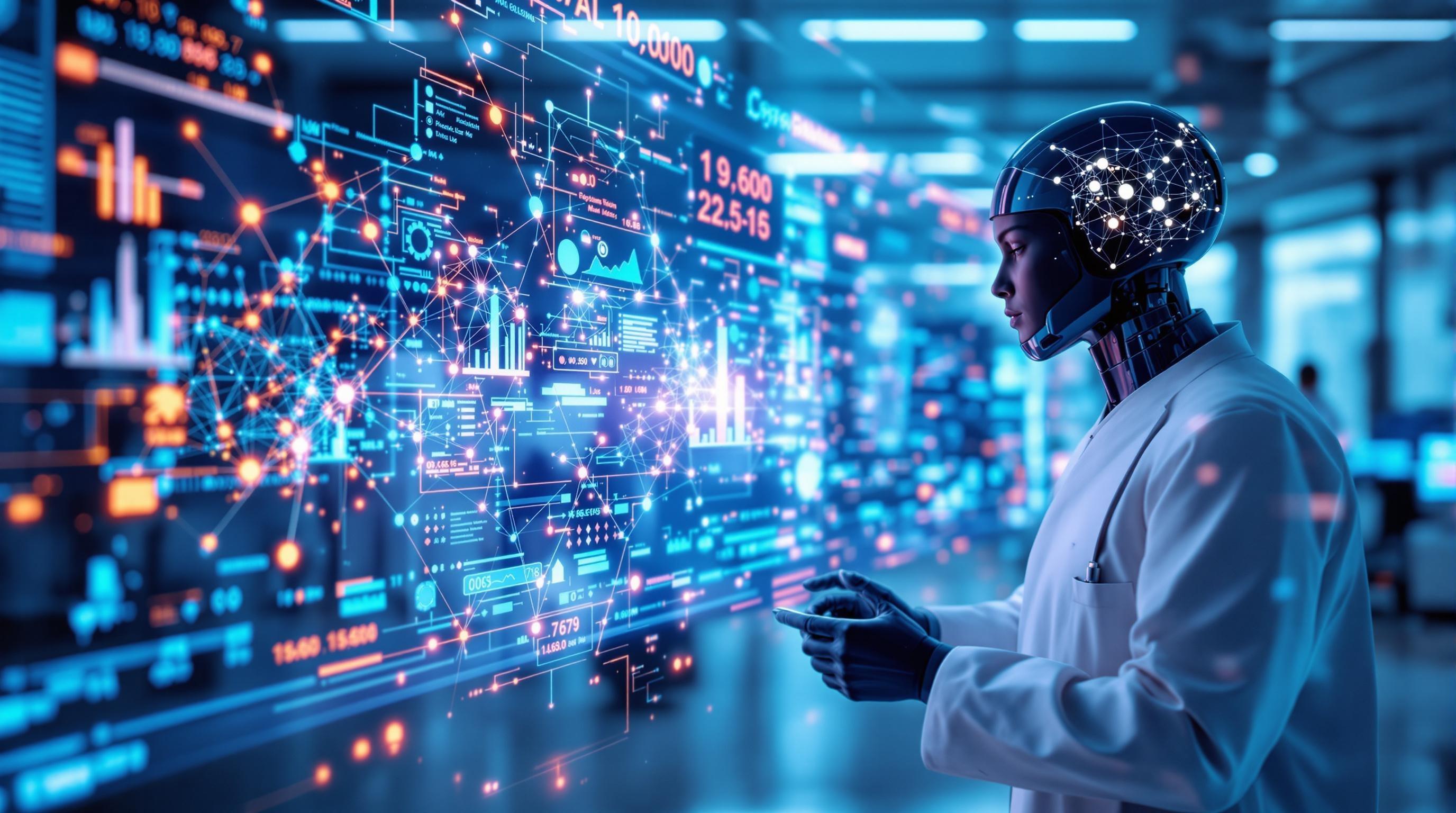
Google Invests $1 Billion in AI Education: Building a Safer, More Inclusive Future
Imagine a world where everyone, regardless of their background, has the opportunity to shape the future of AI. That's the vision behind Google's massive $1 billion investment in AI education, a move that signals a commitment to building not just a smarter, but also a more equitable and responsible AI ecosystem.
Democratizing AI Knowledge: Google's Billion-Dollar Bet
Google's commitment isn't just about throwing money at the problem; it's a strategic investment in the future. Think of it as planting seeds in fertile ground – the seeds being educational programs and resources, and the ground being the minds of students and lifelong learners around the globe. This initiative aims to break down the barriers to entry in the AI field, making it accessible to individuals from diverse backgrounds and skill levels. By providing funding, training, and resources, Google hopes to cultivate a new generation of AI experts who can contribute to the field in meaningful ways. This initiative is timely, especially in the context of the fast-evolving landscape of AI News.
Gemini Pro for All: Leveling the Playing Field
One of the most exciting aspects of this initiative is the offer of free access to Google Gemini Pro for students. Gemini Pro, Google's cutting-edge AI model, is like giving students a super-powered learning assistant. It can help them understand complex concepts, generate creative content, and even assist with coding. By providing free access, Google is leveling the playing field, ensuring that students from all socioeconomic backgrounds have the opportunity to experiment with and learn from one of the most advanced AI technologies available. It's like giving every student a key to the AI kingdom, empowering them to explore its vast potential.
Training the Next Generation: From Novices to Experts
The core of Google's initiative lies in training the next generation of AI talent. This involves creating educational programs and resources that cater to a wide range of skill levels, from complete beginners to seasoned professionals. Imagine a tiered system where individuals can start with introductory courses on AI fundamentals and gradually progress to more advanced topics like machine learning, deep learning, and natural language processing. These programs could include online courses, in-person workshops, and even mentorship opportunities with Google's own AI experts. The goal is to equip individuals with the knowledge and skills they need to succeed in the rapidly evolving AI landscape.
Investing in Responsible AI: Ethics as a Cornerstone
However, Google recognizes that AI is not without its risks. That's why a significant portion of its investment is dedicated to promoting responsible AI usage. This includes developing educational resources on AI ethics, bias detection, and fairness. Think of it as teaching aspiring AI developers and users the importance of building AI systems that are not only powerful but also ethical and inclusive. Google could partner with leading ethicists, policymakers, and community organizations to create a comprehensive framework for responsible AI development and deployment. This framework could serve as a guide for individuals and organizations seeking to harness the power of AI for good, while mitigating its potential harms. You can find further information about the ethical implications of AI in the AI News section of our website.
Building a Safer, More Inclusive Future: AI for All
Ultimately, Google's $1 billion investment is about building a safer, more inclusive AI future. This means creating AI systems that are not only beneficial to society but also accessible and equitable for all. It's about ensuring that AI is used to solve some of the world's most pressing problems, from climate change to healthcare disparities. It's about empowering individuals from all backgrounds to participate in the AI revolution, shaping its trajectory and ensuring that its benefits are shared by everyone. By promoting AI education, fostering responsible AI usage, and democratizing access to AI technologies, Google is laying the foundation for a future where AI is a force for good in the world.
This investment represents a critical step towards a future where AI is not just a powerful technology, but a tool for positive change, accessible to all and guided by ethical principles. This commitment is necessary, given the increasing popularity of tools like ChatGPT, where users should be aware of AI safety.
🎧 Listen to the Podcast
Hear us discuss this topic in more detail on our latest podcast episode: https://creators.spotify.com/pod/profile/bestaitools/episodes/Daily-AI-News-Podcast--August-7--2025-Microsofts-DeepMind-Talent-Grab--Chinas-AI-Warfare--Indias-Sovereign-Cloud--Googles-1B-AI-Education-Push-e36ianf
Keywords: GPT-5, OpenAI, AI model, Artificial intelligence, Tesla FSD, NVIDIA AI, AI drug discovery, Medical AI diagnostics, Financial AI, Claude Opus 4.1, Meta Llama 4, AI education, Autonomous vehicles, Generative AI, AI safety
Hashtags: #AI #ArtificialIntelligence #GPT5 #MachineLearning #Innovation
For more AI insights and tool reviews, visit our website https://best-ai-tools.org, and follow us on our social media channels!
Website: https://best-ai-tools.org
X (Twitter): https://x.com/bitautor36935
Instagram: https://www.instagram.com/bestaitoolsorg
Telegram: https://t.me/BestAIToolsCommunity
Medium: https://medium.com/@bitautor.de
Spotify: https://creators.spotify.com/pod/profile/bestaitools
Facebook: https://www.facebook.com/profile.php?id=61577063078524
Recommended AI tools
Sora
Video Generation
Create stunning, realistic videos and audio from text, images, or video—remix and collaborate with Sora, OpenAI’s advanced generative video app.
Perplexity
Search & Discovery
Clear answers from reliable sources, powered by AI.
DeepSeek
Conversational AI
Efficient open-weight AI models for advanced reasoning and research
Freepik AI Image Generator
Image Generation
Generate on-brand AI images from text, sketches, or photos—fast, realistic, and ready for commercial use.
Windsurf (ex Codium)
Code Assistance
Tomorrow’s editor, today. The first agent-powered IDE built for developer flow.
Canva Magic Studio
Design
All the AI magic of Canva, in one place.

